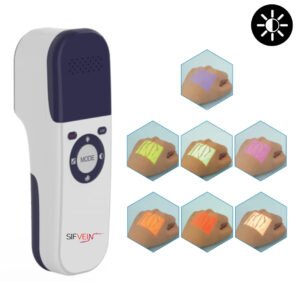Efficacy of Vein Finder for Peripheral Intravenous Catheter Placement in Preterm Infants
Preterm Infants, also known as preterm birth is defined as babies born alive before 37 weeks of pregnancy are completed.
There are sub-categories of preterm birth, based on gestational age:
- extremely preterm (less than 28 weeks)
- very preterm (28 to 32 weeks)
- moderate to late preterm (32 to 37 weeks).
Depending on how much care the baby requires, he /she may be admitted to an intermediate care nursery or the neonatal intensive care unit (NICU).
Preterm Infants could experience some complications such as heart problems.
The most common heart problems preterm Infants experiences are patent ductus arteriosus (PDA) and low blood pressure (hypotension).
PDA is a persistent opening between the aorta and pulmonary artery. While the heart defect often closes on its own, left untreated can lead to a heart murmur, heart failure as well as other complications. Low blood pressure may require adjustments in intravenous fluids, medicines.
For these reasons, the Placement of a Peripheral Intravenous Catheter needed. Yet, Preterm infants are fragile and have small blood vessels, so venipuncture in this procedure tends to be a very challenging task for health care providers.
Since the placement of a PIVC is a painful procedure, repeated attempts for successful insertion should therefore be limited. A vein finder is an important piece of equipment in the hands of a medical professional.
By using a vein finder SIFVEIN-5.2 paediatrics can see the blood vessels of 10 mm under the patients’ skin. In addition to the surrounding veins and their branches, doctors can also see the flaps of blood vessels and the flow of blood, as well as the flow of drugs in the blood vessels.
A study was conducted between June 2016 and April 2017 in the neonatal intensive care unit of Bakırköy Dr Sadi Konuk Education and Research Hospital have shown that the use of an infrared device ( vein finder) provides efficacy in time to successful cannulation.
Indeed, the result was a success on the first attempt, and the catheter was in place without taking much time.
To sum up, with the Infrared vein detector, success rates can be dramatically increased for the first venipuncture by medical professionals, the puncture period can be decreased, reducing the patient’s pain, reducing the risk of infection, enabling the patient to receive medication or liquid care more rapidly, and winning the rescue time.
References: Preterm Birth, Premature Birth, Efficacy of Vein Visualization Devices for Peripheral Intravenous Catheter Placement in Preterm Infants



